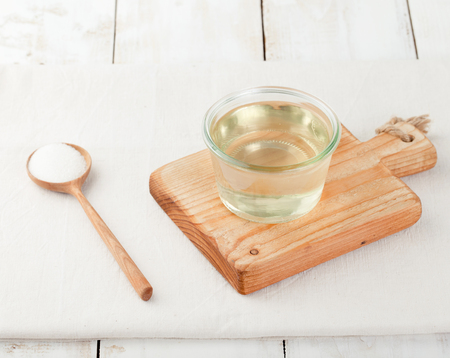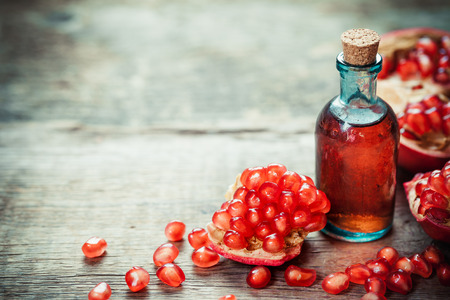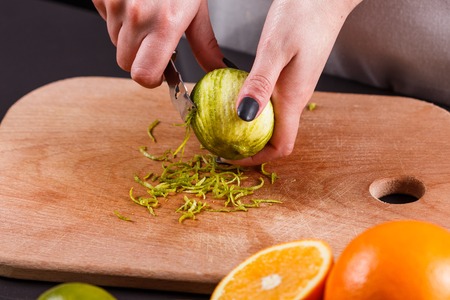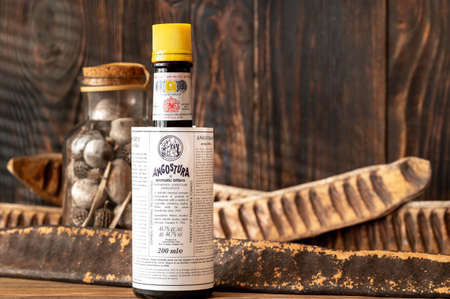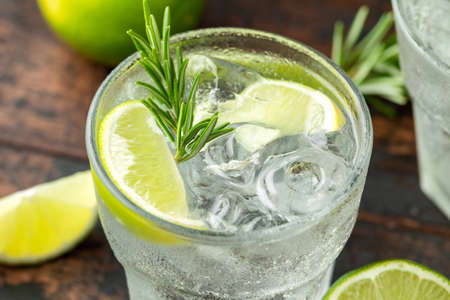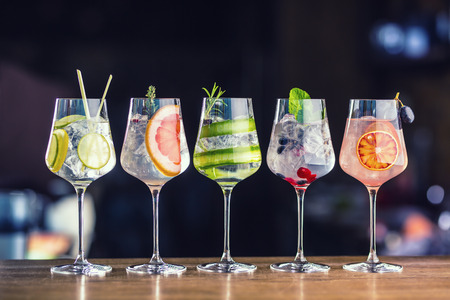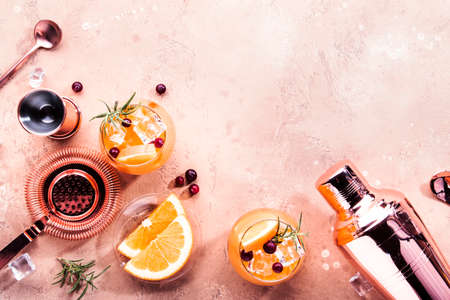
In our previous article , we discussed the basic equipment that will allow you to make your cocktails at home. Now let's focus on the content, that is to say the ingredients that you will need to have in your bar. With this list, you will be able to make the majority of classic cocktails as well as their derivatives, and you will even be able to give free rein to your creations!
It's quite long, and of course you can gather these ingredients over time, first targeting your priorities according to your preferences.
In the beginning, there is ice…
It is not the ingredient that we necessarily think of first, but it is nevertheless essential. Whether it is to shake or mix your preparations, you will use ice in large quantities. It is used to refresh of course, but also to dilute, however this dilution must be controlled.
So, the quality of the ice is very important. Ideally, it should be very hard, of sufficient size, and as clear as possible for the aesthetic side.
Don't skimp on the ice, and fill the shaker tin or mixing glass completely. The more ice, the less it melts, and therefore the more refreshing it is without diluting it excessively.
For this, it is recommended to avoid ice cubes in bags, or those from your dispenser integrated into the refrigerator. The latter are not dense enough and break into a thousand pieces, which causes a much too significant dilution. One of the best solutions is that of ice cubes sold in frozen food stores or supermarkets. Another very good possibility is that of the silicone ice cube trays that we offer on the site, in medium and large sizes.
In Paris and for delivery, for a superb clear ice cream, try The Nice Company . Beyond being prettier to the eye, it also melts a little more slowly.
Crushed ice is sometimes recommended, especially in tiki cocktails, but it is not used for shaking or mixing. It is only useful when serving, and provides very high dilution.
Syrups, bitters and sodas
Easy syrups to make yourself
Most cocktails need a sweet element to find their balance. For this, you can use liqueurs, or different syrups. You can find all kinds of syrups in stores, but it is often more fun and interesting to make them yourself.
Simple syrup (sugar syrup), for example, is a must-have that is very easy to prepare:
In a saucepan, pour 1 measure of sugar and 1 measure of water. Heat gently until the sugar has melted, and leave to cool. Pour this mixture into a small bottle and store in the refrigerator.
Rich Simple Syrup (RSS)
For a thicker syrup, you can dilute 2 parts sugar in one part water.
For conservation, 4 possibilities:
– Boil a bottle in water to have a sterile bottle, very clean for storage.
– Rich syrup keeps much longer, several months normally. For simple syrup, it’s more like 2 weeks theoretically.
– A tablespoon of neutral alcohol, such as vodka or light rum.
– Add a preservative, such as a little citric acid, although this will change the taste of the syrup.
(The real) Grenadine Syrup :
It's a bit like the same principle, and it's just as easy to make as sugar syrup. Without heating, mix one measure of pomegranate juice and one measure of sugar, until the latter dissolves. Add a touch of orange blossom water
If you find your syrup a little bland, you can add a little pomegranate molasses (for color and taste), or a little red fruit like raspberry.
The same techniques as for syrup apply for preservation.
Falernum :
This low-alcohol syrup was originally a specialty of Barbados distilleries, a sort of homemade punch. Initially a drink in its own right, today it is more readily used as an ingredient, which brings subtlety to a certain number of recipes.
There are some very good falernums on the market, such as the Merveilleux Falernum from Maison Ferroni, but you can have fun making it yourself:
Toast about fifty cloves, 1 tablespoon of allspice and a nutmeg in the pan.
Pour this into 25 cl of rum (traditionally, we use an overproof like Wray & Nephew ), then add the zest of 8 limes and 50 grams of chopped ginger.
Cover with plastic wrap and let steep at room temperature for 24 hours.
Then, make a syrup by heating 40 cl of sugar and 25 cl of water. Filter the spice and rum mixture, and mix it with the syrup. Add about ten drops of almond extract, and you're done!
Lime Cordial (lime cordial)
This syrup is a sweetened version of lime juice, which originally had the advantage of being preserved during long sea voyages. It was one of the ingredients of the famous Royal Navy grog. Today it is found in many recipes. It is very easy to make:
Over low heat, melt 500g of sugar in 50cl of water.
Add the zest of 12 limes, bring to the boil and reduce for 5 minutes.
When the syrup has cooled, add the juice of the 12 limes, mix, and bottle.
Ginger beer
This non-alcoholic ginger ale (as its name does not indicate) is made by fermenting ginger, lime and sugar. It is the essential ingredient in Moscow Mule or Dark'n Stormy for example. It is quite fun to make it at home, contemplating the wonders of fermentation:
In a 1.5L lemonade type bottle, or in a plastic water bottle:
Pour in 170g of chopped ginger, 100g of sugar, 20cl of lime juice, 4 grams of baker's yeast and 1 liter of water.
Let it ferment for 24 to 48 hours depending on room temperature, and loosen the cap from time to time to let the pressure escape. Then place the bottle in the refrigerator to stop the fermentation.
Mysterious and essential Bitters
Bitters are aromatic concentrates, flavor enhancers that often make all the difference in a successful cocktail. They were originally made by pharmacists to treat stomach aches and all sorts of ailments, before bartenders took them over and made them a must-have in the cocktail world.
The most emblematic of them is a mixture of herbs, spices and alcohol that comes to us from Trinidad: Angostura . It is also found in orange or cocoa variations. Bitter can also be made on an agricultural rum base, like this Saint James Bitter, the recipe for which is detailed on the product page.
Tonics, gin's best ally, but not only
Tonic water also originated as a medicine in the 19th century. To combat malaria, British soldiers on missions in India were advised to take doses of quinine, which was supposed to protect them. However, this concentrated quinine was very difficult to ingest, due to its extreme bitterness. Diluting it with sparkling water was a good solution, and thus "tonic water" was born. It was soon realized that gin was an additional way to enhance the experience; and the gin and tonic was born.
Today, there are many tonics on the market, from the traditional Indian tonic to spicy tonics, including fruity tonics. They are mostly consumed with gin, but the experience is also interesting with an arranged rum or even a shrubb .
Style matters too, and that's what trimmings are for
This title is ultimately quite misleading, because the garnishes also have a taste interest, if not an olfactory one.
Spices
Indeed, a little cinnamon or nutmeg sprinkled on the foam of a cocktail will enchant your nose before your taste buds even enjoy it. You can also use the whole cinnamon stick, and even light it on fire when serving! In the same spirit, star anise or a few coffee beans also have their effect.
The fruits
The maraschino cherry is as sexy to look at as it is to taste, just like the famous olive in a Martini. Generally speaking, any fruit works very well. From a lemon wedge to a pineapple chunk, from red and black berries to thin slices of apple or peach, the pairings are endless.
You can also try more elegant things, like citrus zests “expressed” over the glass and then delicately arranged. Rarer fruits like dragon fruit add drama, as do passion fruit halves (flamed in tiki cocktails) placed atop the cocktail.
On skewers, in pieces, dehydrated, in slices, in zest, it's the opportunity to let your imagination and your creative sense speak.
Herbs and flowers
Herbs are often an integral part of the recipe, such as mint in a mojito , but they can also add subtle flavors as an optional garnish. For example, a sprig of rosemary is sometimes found in a gin and tonic, or a basil leaf in a lemon cocktail.
The agreements with aromatic herbs are interesting to explore. They offer subtle nuances and a successful visual aspect. Sometimes, only the visual aspect is to be taken into account, because pineapple leaves, lemon leaves, or thyme branches are not edible as they are, although they are very aromatic.
Don't hesitate to use flowers as well, as long as they are edible of course. These include pansies, violets, borage, but also young thyme or rosemary flowers for example.
In our next article, we will review all the alcohols and liqueurs, for a truly delightful world tour of cocktails…

